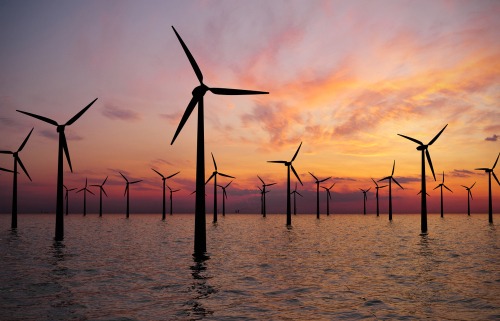Dominion Energy files with Virginia commission for offshore wind project approval

Dominion Energy filed plans with the Virginia State Corporation Commission to build the 2.6-gigawatt Coastal Virginia Offshore Wind (CVOW) commercial project.
The filing keeps this project on schedule and builds on recent economic development announcements, including the Siemens Gamesa Renewable Energy turbine blade factory at the Portsmouth Marine Terminal and Dominion Energy’s investment in an offshore wind turbine installation vessel.
The CVOW commercial project could create approximately 900 jobs, generate $5 million per year in local and state tax revenue, and $143 million in economic benefits annually during construction, according to a recent study by Mangum Economics. During operation, the CVOW commercial project could result in 1,100 jobs, generate $11 million per year in local and state tax revenue, and almost $210 million in economic benefits annually.
Overall, the project represents an investment of $9.8 billion. Over the life of the project, the net average cost of the project to a typical residential customer is estimated at approximately $4 per month. However, this figure will initially be less and vary from year-to-year.
“Our customers expect reliable, affordable, and clean energy, and we intend to deliver. In addition to solar, storage, and nuclear, offshore wind is a key component of our strategy and a game-changer for the Hampton Roads economy,” Robert Blue, Dominion Energy chair, president and CEO, said. “CVOW is making Virginia the hub for this new industry. Virginia will host the first offshore wind turbine blade factory in the United States and be the home port for the only Jones Act compliant offshore wind installation vessel.”
As part of the filing, Dominion Energy is also requesting approval to build approximately 17 miles of new transmission lines and other onshore infrastructure needed to deliver the energy generated offshore to homes and businesses across Virginia.
A proposed transmission interconnection route has been presented along with alternatives for the Commission to consider. The route options were determined after thorough study and engagement with Virginia Beach and Chesapeake officials, Virginia and federal agencies and land managers, and the local communities. The proposed route would be the shortest of the potential routes and would impact private property the least. Specifically, 92 percent of the route is located within the former Southeastern Parkway and Greenbelt corridor, owned primarily by the City of Virginia Beach, or collocated with existing Dominion Energy transmission line corridors.
